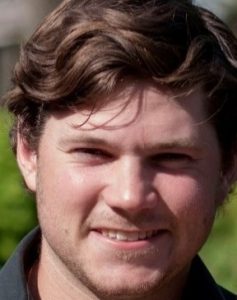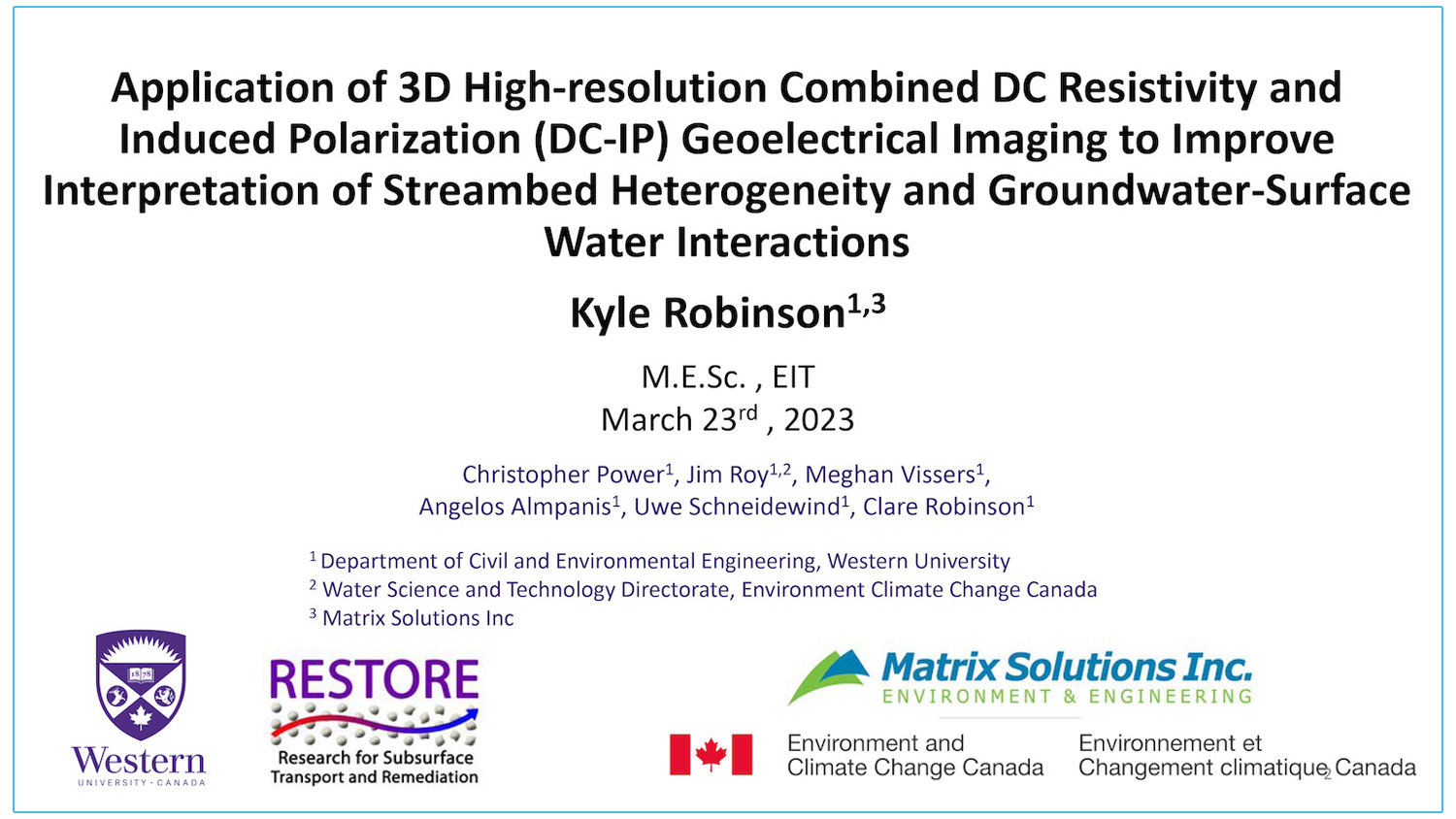TRACK 2, DAY 2
Application of 3D High-Resolution Combined DC Resistivity and Induced Polarization (DC-IP) Geoelectrical Imaging to Improve Interpretation of Streambed Heterogeneity and Groundwater-Surface Water Interactions
ABSTRACT
Common approaches for characterizing streambed architecture, and its influence on groundwater-surface water (GW-SW) exchanges, are generally limited by their invasiveness and low spatial sampling density, which is a particular issue in streambeds that typically have high spatial heterogeneity.
Combined DC resistivity and induced polarization (DC-IP) imaging can provide rapid, non-invasive and continuous information on streambed lithology; however, its full potential remains unrealized.
The objective of this study is to demonstrate the value of DC-IP imaging, in both 3D and high-resolution, for characterizing streambed architecture and interpretating GW-SW exchange patterns. The study focused on a 50 m long stream reach located in Kintore, Ontario, Canada.
Chargeability highly complements resistivity by confirming that the shallow streambed contains only non-clayey materials; therefore, the more resistive areas attributed to more permeable coarse sand and gravel, while the more conductive area is attributed to less permeable finer sand, and consequently, increased porewater EC due to longer residence times and hyporheic exchanges.
This geoelectrical interpretation is well-supported by information from traditional methods (e.g., higher temperature and hydraulic gradients correspond to the more permeable areas). This study demonstrates the potential of spatially continuous, high-resolution DC-IP information for mapping streambed architecture and its control on GW-SW exchanges.
ABOUT THE PRESENTER

Kyle Robinson, Matrix Solutions
Kyle graduated with a Bachelors Degree in Civil and Environmental Engineering from Western University in April 2019. Kyle decided to continue his education, joining the RESTORE group at Western University. He completed a Master’s in Engineering Science in Civil and Environmental Engineering, in February 2022. Kyle is currently employed as a Water Resources Engineer in Training at Matrix Solutions, London Ontario.

